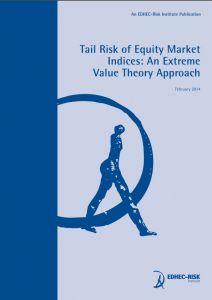

Tail Risk Of Equity Market Indices: An Extreme Value Theory Approach
Value-at-risk (VaR) and conditional value-at-risk (CVaR) have become standard choices for risk measures in finance. Both VaR and CVaR are examples of measures of tail risk, or downside risk, becaus ...
Author(s):
Summary:
Value-at-risk (VaR) and conditional value-at-risk (CVaR) have become standard choices for risk measures in finance. Both VaR and CVaR are examples of measures of tail risk, or downside risk, because they are designed to exhibit a degree of sensitivity to large portfolio losses whose frequency of occurrence is described by what is known as the tail of the distribution: a part of the loss distribution away from the central region geometrically resembling a tail. In practice, VaR provides a loss threshold exceeded with some small predened probability, usually 1% or 5%, while CVaR measures the average loss higher than VaR and is, therefore, more informative about extreme losses. An interesting challenge is to compare tail risk across different markets.
Register to download PDF
Register/Log in| Type : | EDHEC Publication |
|---|---|
| Date : | 27/03/2014 |
| Keywords : |
Risk Management |

